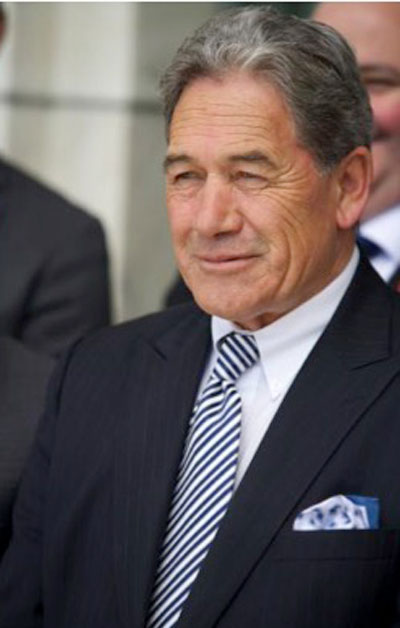
Winston Peters
Discussing forestry policy is a good place to start for Labour leader Jacinda Ardern when she meets with New First leader Winston Peters to talk about a possible coalition. Sources: Radio New Zealand, Otago Daily Times
Labour and NZ First agree almost completely on forestry policy because during the campaign, Labour appeared to have lifted a NZ First policy straight from a speech made by Mr Peters.
Both Labour and NZ First support splitting forestry from the Ministry of Primary Industries to reestablish the NZ Forestry Service as a practical, get-things-done department.
Forestry is New Zealand’s third largest export sector but Mr Ardern said there was a dramatic switch away from processing to exporting raw logs.
Although 3000 jobs in wood processing and manufacturing had been lost since 2008, raw log exports had tripled.
A Labour government would have first preference for using wood in new building projects, including KiwiBuild.
Mr Peters said NZ First did not plan to tax raw logs being exported but it could put restrictions on their exports by making exporters apply for permits on year-by-year basis.
National, which is also talking with Mr Peters, does not have a specific forestry policy, just a policy on primary industries.
The policy sheet showed New Zealand exported $5.9 billion of forestry products each year.
Prime Minister Bill English is sure to be able to accommodate any forestry demands from Mr Peters, including taking the department out of Primary Industries.
The Green Party, which has ruled itself out of a coalition with National, and is likely to be sidelined by NZ First, wants to expand diversity of species in plantation forests, managing and using them sustainably.
Foreign investment in forestry is crucial and New Zealand could never afford to buy back all the forests it has sold, the Forest Owners Association says.
New Zealand First leader Winston Peters said the future of forestry and timber supplies for local mills is one of his party’s priorities as it heads into coalition talks.
He wanted the next government to protect wood supply to domestic mills by creating a Forest Service, and had previously stuck-up for Northland wood processors who said they were being squeezed out of the market by foreign forest owners and buyers.
Commercial forestry is a much bigger industry than most people think, with NZ$25 billion to NZ$30bn invested in plantations, the association’s president Peter Clark said.
“It is widely acknowledged in Treasury, MFAT, and trade advisors, that we need foreign direct investment. Forests are pretty benign and logical place to have that investment.”
Forestry has not been viewed as an attractive investment in New Zealand compared with farming intensification. More government interest is needed in the industry, as well as new plantings, he said.
“There’s been a market failure. We’ve had 20 years of virtually no new planting and this is the main problem. We have heard a lot from Winston’s electorate in Northland about wood supply into sawmills and that is absolutely correct and the major cause of it is no new planting. So, there is a gap.”
However, if the government began to dictate to forest owners who they can sell logs to, and at what prices and ages, it would discourage new plantings and investment, Mr Clark said.
Roughly 80% of the country’s forests are owned by 22 companies, most of which are offshore, according to Warrick Searle, director of agribusiness at CBRE, a real estate and investment firm.
“There is certainly a lot of North American companies and investment managers. They like NZ forestry because it is a stable and long term investment, so it fits with their investment model.” Foreign capital is beneficial for the industry, he said.
“They pour huge amounts of money into operating expenses which flows directly into the New Zealand economy, so I don’t see what the downside to New Zealand is and ultimately we need them to be reinvesting in more forestry, replanting, more pruning and all those operational things. “The economy thrives off it, it provides jobs.”





